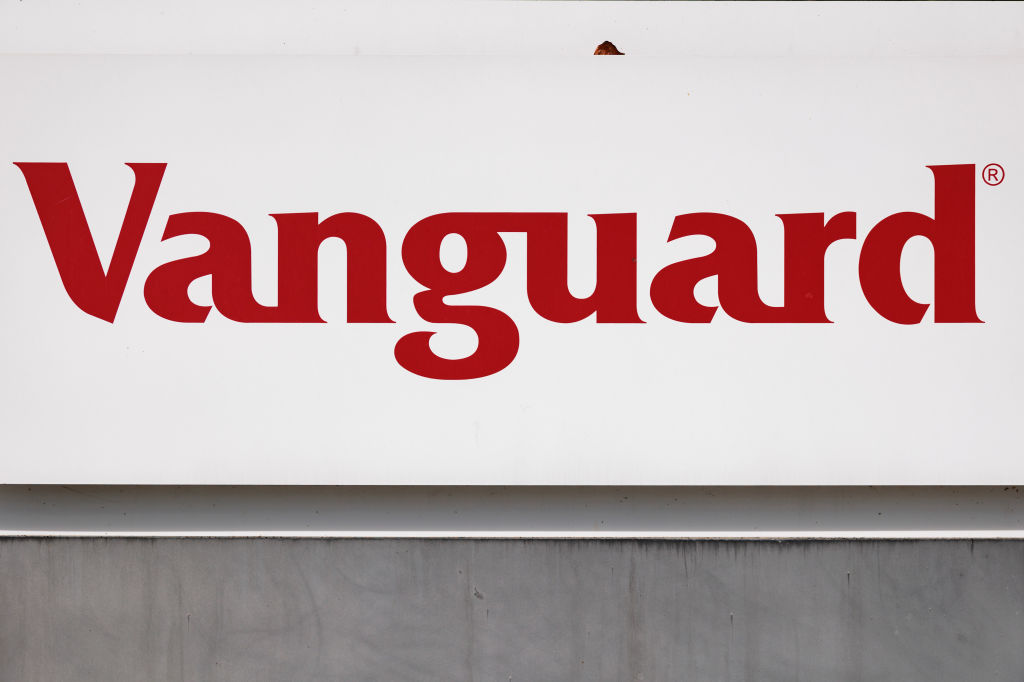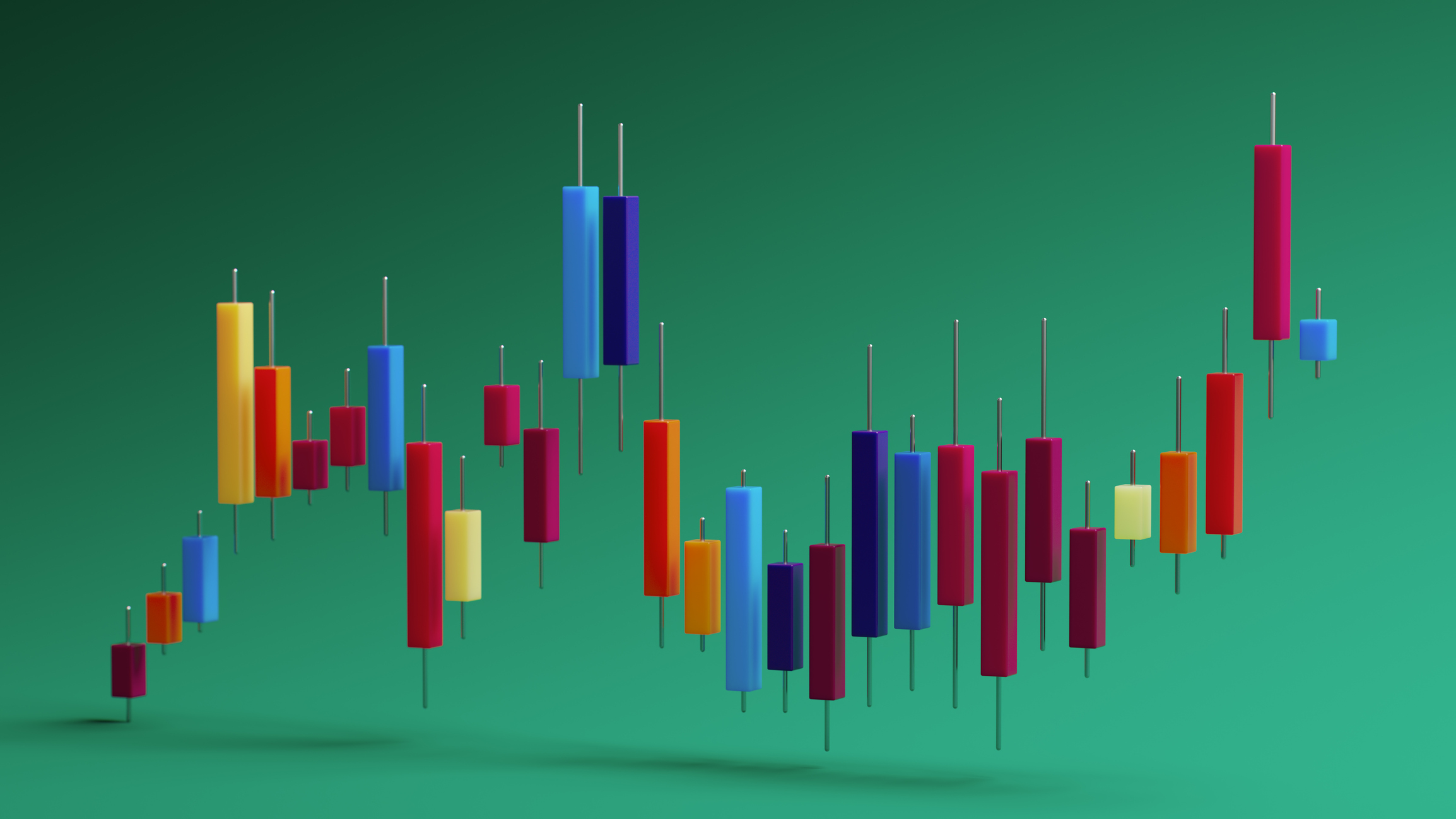5 Actively Managed Vanguard Funds to Buy and Hold
These actively managed Vanguard funds cover a variety of investment strategies and have low fees to boot.


If I say "Vanguard" and you think "index funds," you can blame us for your Pavlovian mental response.
We and the rest of the financial media have been lauding the cost-effective goodness of Vanguard's inexpensive index funds since … well, since Vanguard founder John Bogle created them back in 1975.
But to be fair to Vanguard, its actively managed funds are nothing to sneeze at.
Before the index fund, active management was the way business was done: One or more human managers selected portfolio holdings and determined when to buy and sell.
The index fund altered the model, with a rules-based index calling the shots. Given that managers collect a salary and a computer-stored index doesn't, actively managed funds typically charge higher fees than similar index funds.
And since fees are taken out of a fund's performance, actively managed funds must deliver even better returns to justify their costs.
The good news? Vanguard's roster of about 75 actively managed funds is stacked with solid performers, many of which charge extremely low fees despite having skilled human managers running the show.
Check out five of Vanguard's best actively managed funds to own for the long term.
The products listed here rank among the best Vanguard mutual funds: They cover a variety of basic strategies, and they boast annual fees that are in the bottom 20% of their Morningstar category.
Also, all funds listed here are no-load Investor-class shares, which feature reasonable $3,000 investment minimums.
Data is as of June 4. Yields on equity funds represent the trailing 12-month yield. Yields on bond funds are SEC yields, which reflect the interest earned after deducting fund expenses for the most recent 30-day period.

Vanguard PRIMECAP Fund Investor Shares
- Fund category: Large blend
- Assets under management: $69.3 billion
- Yield: 0.9%
- Expense ratio: 0.37%, or $37 annually for every $10,000 invested
We'll start with exposure to large-cap stocks – what you'd typically get by investing in the S&P 500.
The Vanguard PRIMECAP Fund Investor Shares (VPMCX) is helmed by a five-manager team with nearly 26 years' worth of experience on average.
Three managers – Theo Kolokotrones, Joel Fried and Alfred Mordecai – have been with Vanguard PRIMECAP since before the turn of the century, while James Marchetti (2005) and M. Mohsin Ansari (2007) joined in the 2000s.
Unlike some funds where the managers work together to determine portfolio holdings, each manager here is tasked with leading a sub-portfolio and can choose whatever stocks they want. It's a buy-and-hold strategy, too, with an expected holding period of at least three to five years.
Currently, the team has built a roughly 170-stock portfolio of large caps representing both value and growth strategies.
At the moment, the fund's assets are overwhelmingly used to hold health care stocks (31%) and technology names (26%), with top holdings including the likes of Eli Lilly (LLY), Boston Scientific (BSX), and Microsoft (MSFT).
Industrial stocks (13%) and consumer discretionaries (12%) also command double-digit weights.
As a result, some sectors are mostly left out – exposure to energy, materials and consumer staples is less than 2% apiece, and exposure to utilities and real estate investment trusts (REITs) is nonexistent.
Large-cap stocks are admittedly one area in which it's difficult to choose active management over indexes – big, blue-chip American stocks are the widest-held and heavily covered on the planet, so there aren't exactly many pricing inefficiencies to exploit.
PRIMECAP's team has done a commendable job, beating Vanguard 500 Index Fund Admiral Shares (VFIAX) by about 20 basis points on average over the trailing 15-year period … though it has come up a percentage point or two short over shorter-term time periods.
Where VPMCX really seems to excel is during down years. PRIMECAP's team beat out the S&P 500 in 2022 and 2018, for instance, and is outdoing the index year-to-date in 2025 as of this writing.
And Morningstar gives the fund a Gold Medalist rating, which is a forward-looking rating system used to determine a fund's ability to outperform its category index (after fees).

Vanguard Strategic Small-Cap Equity Fund Investor Shares
- Fund category: Small blend
- Assets under management: $1.6 billion
- Yield: 1.0%
- Expense ratio: 0.21%
If you want to be a little more aggressive with your portfolio, you can tap smaller companies.
Buying small-cap stocks is a pretty straightforward high-risk/high-return strategy.
Smaller companies tend to be younger and in earlier stages of the growth cycle, meaning they have more runway to expand business lines and geographical markets.
They also tend to be much more agile than their larger peers, and in some cases, boast disruptive technologies that allow them to gobble up market share or, better yet, create whole new markets.
The flip side? They tend to have fewer lines of business, they can have a more difficult time securing debt, and they're typically not as well-capitalized, making them more volatile and susceptible to economic shocks and outside disruption.
So, rather than owning individual small caps, some investors try to harness their growth potential while reducing risk through mutual funds such as the Vanguard Strategic Small-Cap Equity Fund Investor Shares (VSTCX).
Portfolio manager Cesar Orosco has worked in investment management since 2004, but he's a relatively new face to VSTCX, taking the helm in 2021. His portfolio is currently made up of about 585 stocks with a median market cap of just over $3 billion.
That holdings set is plenty wide when compared to actively managed large-cap funds, but actually on the smaller side compared to passive small-cap strategies, which sometimes invest in thousands of stocks.
Top holdings at the moment include the likes of insurer Axis Capital Holdings (AXS), commercial REIT Brixmor Property Group (BRX), and genomics-based drug company Exelixis (EXEL).
Unlike with large caps, institutional investors, analysts and the media alike don't pay nearly as much attention to small- and mid-cap stocks. The result is many more pricing inefficiencies that savvy managers can use to their advantage.
VSTCX management has clearly delivered an advantage to its shareholders – the fund has beaten both its category average and category index over the trailing three-, five-, 10- and 15-year periods.
It also garners a Gold Medalist rating from Morningstar.

Vanguard International Core Stock Fund Investor Shares
- Fund category: Foreign large blend
- Assets under management: $3.5 billion
- Yield: 1.7%
- Expense ratio: 0.48%
While most American portfolios are going to be chock-full of U.S. stocks, advisers will typically prescribe at least a little geographic diversification.
And the Vanguard International Core Stock Fund Investor Shares (VWICX) helps you do so while getting exposure to foreign stocks from both …
- Developed markets: Large, stable economies with transparent, heavily regulated and highly accessible capital markets, albeit with slower rates of growth. Think the U.S., Western Europe, Japan and Australia.
- Emerging markets: Rapidly growing economies with burgeoning middle classes and high rates of industrialization, albeit with less accessible and transparent markets, and often with more risks, such as political instability and currency fluctuations. Think Southeast Asia, South America, Western Europe and Africa.
Managers F. Halsey Morris and Anna Lunden currently own a tight 91 international stocks, with a 75%/25% blend of developed and emerging markets.
Assets are scattered among roughly two-dozen countries; the portfolio is most heavily concentrated in developed markets such as Japan (15%), the U.K. (10%) and Germany (9%), though emerging markets China (8%) and India (6%) command decent chunks of fund assets.
International funds tend to be stocked with financial stocks, and that's very much the case with VWICX, which allocates roughly a quarter of assets to the sector.
Tech (14%) and consumer discretionary stocks (11%) are the only other two double-digit weights.
Also, international large caps tend to yield more than the American counterparts, and that's reflected in a yield of nearly 2% for Vanguard International Core Stock, certainly better than what the S&P 500 offers right now.
This actively managed Vanguard fund came to life in 2019, but it's one of the asset manager's best funds by numerous metrics.
It boasts a stellar five-year average annual return of more than 14% – better than the category average, category index and 95% of its category peers. It also enjoys a Gold Medalist rating from Morningstar.

Vanguard High-Yield Corporate Fund Investor Shares
- Fund category: High yield bond
- Assets under management: $24.3 billion
- SEC yield: 6.2%
- Expense ratio: 0.22%
Naturally, Vanguard has its share of actively managed bond funds, too. While we'd typically like to feature a broad core or core-plus fund in a list like this, most of Vanguard's best-rated actively managed bond funds tend to focus on specific segments of the fixed-income market.
Take, for instance, the Vanguard High-Yield Corporate Fund Investor Shares (VWEHX) – a portfolio of primarily high-yield corporate bonds (aka high-yield bonds, aka junk bonds), but also a handful of Treasuries, bank loans, agency debt and even investment-grade issues "suffering from near-term weakness."
When a major bond rating agency evaluates a bond, it provides a grade that communicates how likely an investor is to receive their full principal and interest payments. Anything above a certain level is considered investment-grade, while anything below that threshold is considered junk.
But even junk exists on a spectrum, and Vanguard High-Yield Corporate aims to invest in junk debt that's of a higher credit quality and lower risk than what's held by comparable high-yield funds.
Right now, the roughly 950-bond portfolio has 50% of its holdings in debt rated BB, which is the highest-quality level of junk.
Another 35% is in B-rated bonds. It also has a 10% weight in Treasuries and other investment-grade bonds.
The smallest allocation (5%) is dedicated to bonds rated CCC or lower, or those that are unrated. And yet, despite holding such high-quality bonds, VWEHX still delivers a healthy yield of more than 6% currently.
Vanguard High-Yield Corporate launched in 1978, so it's a very old fund – one that has delivered a 7.8% average annual return since inception.
Its comparables are mixed, though: VWEHX is among the top 25% of its peers by performance over the trailing 15-year period, and in the top third over the past 10, but it's in the bottom half over the trailing three and five years.
Current managers Elizabeth Shortsleeve and Michael Chang have only been with the fund since 2022, but Morningstar Senior Analyst Tom Murphy thinks highly of the fund's prospects.
"As the managers build on their respective track records, the strategy has a good shot of adding to its history of strong risk-adjusted long-term performance, given its low fees and anchor sub-adviser Wellington's proven process," Murphy says about VWEHX, which has earned a Morningstar Silver Medalist rating.

Vanguard Wellington Fund Investor Shares
- Fund category: Moderate allocation
- Assets under management: $106.9 billion
- Yield: 2.1%
- Expense ratio: 0.25%
The Vanguard Wellington Fund Investor Shares (VWELX), which launched in 1929, is both Vanguard's oldest mutual fund and the nation's oldest balanced fund – that is, funds that own both stocks and bonds.
Vanguard Wellington has been managed by Wellington Management Company since its inception.
However, while the fund's current managers, Loren Moran and Daniel Pozen, average more than two decades of investment management experience, they have only been managing VWELX since 2017 and 2019, respectively.
The pair is tasked with investing roughly two-thirds of assets into stocks and the remaining third into bonds.
At the moment, the fund's stock sleeve is roughly 75 companies wide with a clear preference for large-cap stocks – the median market cap is more than $230 billion presently.
Management also has an affinity for tech stocks, which account for 30% of assets, led by top holdings Microsoft and Apple (AAPL).
The bond sleeve is much wider, at more than 1,300 holdings currently. The entire debt portfolio is investment-grade in quality, with two-thirds of assets in corporate debt, another 25% in Treasuries, and the rest split among a few other bond types.
The result is effectively a one-stop shop for an investor's basic needs, should they want to entrust their entire portfolio to a single mutual fund.
At the very least, VWELX has proven a worthy steward. By performance, this Gold Medalist-rated fund is in the top quartile of its category over the trailing one-, three-, five-, 10- and 15-year time frames.
It has topped its category average and index over those time periods, too.
VWELX does have high turnover (how much of the fund's portfolio turns over in a given year), at more than 60% currently.
That makes it less tax-efficient, which is why it and similar funds are best stashed in a 401(k) plan or similar tax-advantaged account.
"The fund continues to stand out under the stewardship of lead managers Daniel Pozen and Loren Moran," Morningstar Analyst Stephen Margaria says.
"Along with its attractive fees, this fund is a strong choice for investors seeking a steady allocation to stocks and bonds," he adds.
Learn more about VWELX at the Vanguard provider site.
Related content
Profit and prosper with the best of Kiplinger's advice on investing, taxes, retirement, personal finance and much more. Delivered daily. Enter your email in the box and click Sign Me Up.
Kyle Woodley is the Editor-in-Chief of WealthUp, a site dedicated to improving the personal finances and financial literacy of people of all ages. He also writes the weekly The Weekend Tea newsletter, which covers both news and analysis about spending, saving, investing, the economy and more.
Kyle was previously the Senior Investing Editor for Kiplinger.com, and the Managing Editor for InvestorPlace.com before that. His work has appeared in several outlets, including Yahoo! Finance, MSN Money, Barchart, The Globe & Mail and the Nasdaq. He also has appeared as a guest on Fox Business Network and Money Radio, among other shows and podcasts, and he has been quoted in several outlets, including MarketWatch, Vice and Univision. He is a proud graduate of The Ohio State University, where he earned a BA in journalism.
You can check out his thoughts on the markets (and more) at @KyleWoodley.
-
 Holiday Tax Scams: 'Tis the Season to be Wary
Holiday Tax Scams: 'Tis the Season to be WaryTax Scams Navigating tax tricks of the holiday season may be daunting, but don't let that destroy your festive spirit
-
 Metro by T-Mobile Is Giving Away This Samsung Galaxy A16: Which Plans Are Eligible?
Metro by T-Mobile Is Giving Away This Samsung Galaxy A16: Which Plans Are Eligible?Metro by T-Mobile is offering free Samsung Galaxy A16 phones on eligible plans right now. Here’s how the deal works.
-
 I Drive and Collect Classic Cars: Here’s How I Got Started
I Drive and Collect Classic Cars: Here’s How I Got StartedAre classic cars a hobby or an investment strategy — or both? Either way, the vintage car scene is much cooler and more affordable than you think.
-
 The $183,000 RMD Shock: Why Roth Conversions in Your 70s Can Be Risky
The $183,000 RMD Shock: Why Roth Conversions in Your 70s Can Be RiskyConverting retirement funds to a Roth is a smart strategy for many, but the older you are, the less time you have to recover the tax bite from the conversion.
-
 A Financial Pro Breaks Retirement Planning Into 5 Manageable Pieces
A Financial Pro Breaks Retirement Planning Into 5 Manageable PiecesThis retirement plan focuses on five key areas — income generation, tax management, asset withdrawals, planning for big expenses and health care, and legacy.
-
 4 Financial To-Dos to Finish 2025 Strong and Start 2026 on Solid Ground
4 Financial To-Dos to Finish 2025 Strong and Start 2026 on Solid GroundDon't overlook these important year-end check-ins. Missed opportunities and avoidable mistakes could end up costing you if you're not paying attention.
-
 Nasdaq Leads as Tech Stages Late-Week Comeback: Stock Market Today
Nasdaq Leads as Tech Stages Late-Week Comeback: Stock Market TodayOracle stock boosted the tech sector on Friday after the company became co-owner of TikTok's U.S. operations.
-
 Are You Putting Yourself Last? The Cost Could Be Your Retirement Security
Are You Putting Yourself Last? The Cost Could Be Your Retirement SecurityIf you're part of the sandwich generation, it's critical that you don't let the needs of your aging parents come at the expense of your future.
-
 I'm an Insurance Pro: It's Time to Prepare for Natural Disasters Like They Could Happen to You
I'm an Insurance Pro: It's Time to Prepare for Natural Disasters Like They Could Happen to YouYou can no longer have the mindset that "that won't happen here." Because it absolutely could. As we head into 2026, consider making a disaster plan.
-
 The Future of Philanthropy Is Female: How Women Will Lead a New Era in Charitable Giving
The Future of Philanthropy Is Female: How Women Will Lead a New Era in Charitable GivingWomen will soon be in charge of trillions in charitable capital, through divorce, inheritance and their own investments. Here's how to use your share for good.
-
 Cooler Inflation Supports a Relief Rally: Stock Market Today
Cooler Inflation Supports a Relief Rally: Stock Market TodayInvestors, traders and speculators welcome much-better-than-hoped-for core CPI data on top of optimism-renewing AI earnings.

